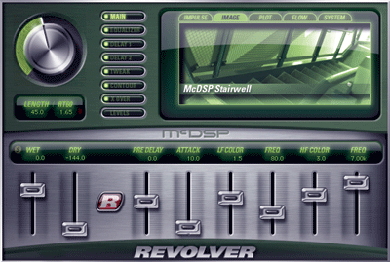The Smart Way To Use Reverb In Your Mix
Nov 05, 2012When it comes to using reverb in a mix, there is an OK way and then there is a smart way. I want you to use reverb the smart way. Now it matters little to me which reverb you are using or how much reverb you like on your tracks. This isn’t a subjective thing, this is a technical thing. If you use reverb the way I’m about to describe you will have more control over your sound and save your computer power for the rest of your mix.

The OK Way To Use Reverb
If you’re like me when I first got into mixing, I considered reverb to be just like any other effect in my plugin list. When I needed it on a vocal track, I literally opened up an available insert and slapped down my stock reverb plugin on that track. It makes perfect sense. I want reverb on the vocal, so I put reverb on the vocal. Just like I would with an EQ or compressor. But there a few major problems with this method.
The biggest issue is the CPU strain it puts on your computer’s resources. Imagine you want all of your vocals, drums, and even some guitars to have a bit of reverb on them. You’ll have to drop upwards of 20+ reverb plugins into your session, which on an average computer can soak up every last drop of power you have. Also, with a track running fully through a reverb plugin you have little control over the reverb signal and the dry signal apart from a “mix” or “blend” knob on the plugin.
The Smart Way To Use Reverb
Your only alternative to the OK way to use reverb is do it the smart way. Instead of putting a reverb plugin on your vocal track (using the above example) you simply open up an auxillary track (or buss, or effects track, depending on your DAW) and insert the reverb plugin there. Now if you want that reverb on your vocal, you’ll need to create an effects Send on your vocal track and “send” it to that newly created “reverb track”. (Check out a video example of this here.)
The beauty of doing it this way is two fold. First you can now have only one reverb plugin open and send as many tracks to it as you like. Those 20+ tracks you wanted reverb on earlier? Yep, they can all have it, and you are only using up the resources it takes to run one instance of your reverb. That’s like an instant 2,000% increase in available power (check my math people).
The Other Benefits To Smart Reverb
The freeing up of CPU power alone is worth switching to the smart reverb method, but that’s not all you get. When your reverb is on a separate track and you are using sends to create the effect, you have way more control over the reverb effect, especially when it comes to automation. Want more or less reverb on your vocal throughout the song? Simply automate the send on that track, up or down. You can do this on all the other tracks as well. All the while you have one simple reverb plugin open.
Another benefit is the simplicity and effectiveness of running all (or most) of your tracks through one reverb. It can instantly glue your tracks together giving your mix a subtly cohesive sound. This is great because it takes no time at all, is easy to setup, and can really improve the sound of your mix. If you’re dropping reverbs on individual tracks, there’s a good chance you’ll have lots of reverb types setup and you’ll potentially create a disjointed sound.
Discover The 6 Steps for Creating a
Radio-Ready Song from Scratch"
Enter Your Email Below To Receive The Free 17-page PDF,
"6 Steps To A Radio-Ready Song"
We hate SPAM. We will never sell your information, for any reason.

